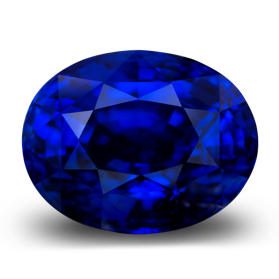

SEPTEMBER BIRTHSTONE — SAPPHIRE
Introduction
Sapphire is one of the most important of all the colored gemstones. All Sapphire pink, blue, yellow and fancy sapphire have a hardness of 9 on the Moh’s scale, sapphires are extremely hard tough and durable they are suitable for use in any kind of jewelry. Blue Sapphire, pink sapphire and Rubies are more familiar and treasured than almost any other gemstone variety. We have a large collection of fine Loose Sapphire Gemstones to help add beauty, and even a little love to your life. AJS Gems wholesale loose Sapphire, Sapphire Gemstone specialist.
- Origin : Madagascar,Thailand, Sri Lanka (Ceylon), Burma, Australia, India, Kenya, Tanzania, U.S.A., China all have blue, pink, yellow and fancy sapphire.
- Color : Blue, Pink, Yellow, Green, Purple,Orange, Padparadscha, Blue Green, Color Change, Brown, Black and all these colors in combination make up the sapphire gemstone group.
- Refractive Index : 1.759-1.778
- Chemical Composition : AL22O3
- Hardness : 9
- Density : 4
- Crystal Structure : Hexagonal
- Zodiac Sign : Libra
- Planet : Venus
- Month : September
- Anniversary : 5th and 45th

Sapphire and Ruby are both corundum, Sapphires are corundum of all colors except red. Red corundum is called ruby. Although pure corundum is colorless, blue sapphire results from a combination of titanium and iron oxides. The name sapphire comes from the Greek word “sapphirus” for blue but sapphires come in many colors including pink, yellow, orange, green black, purple, violet, light blue, and the rare orange-pink Padparadscha” sapphire. Padparadscha comes from the Sinahalese word meaning “lotus color”. Sapphires other than blue ones are usually called “natural fancy-color sapphire”. Red, pink hues result from traces of chromium. The greater the concentration of oxides, the deeper the color.
Sapphire’s enchanting colors are just one reason for this gemstone’s popularity. It’s also extremely durable, having a hardness of 9 on the Mohs scale. Sapphire has a specific gravity of 4.00, a refractive index of 1.76 – 1.78, and birefringence of 0.008.
The refractive index (RI), measured using a refractometer, is an indication of the amount light rays are bent by a mineral. Birefringence is the difference between the minimum and maximum RI. When birefringence is high, light rays reflect off different parts of the back of a stone causing an apparent doubling of the back facets when viewed through the front facet.
Most gems have a crystalline structure. Crystals have planes of symmetry and are divided into seven symmetry systems. The number of axes, their length, their angle to each other determine the system to which a crystal belongs.
Treatments
The traditional heating of rubies and sapphires is a widely used and is an accepted enhancement process which can improve the transparency and the color of the stones. Techniques range from simply throwing gems in a fire to be cooked to employing sophisticated electric or gas furnaces at specific pressures and atmospheric conditions. The treatment is permanent and heated stones do not require special care.
New treatments which are used to produce orange, pink orange and yellow stones are more controversial. The color is achieved through a process which includes the addition of foreign elements to achieve the desired color alteration. This new treatment is a heat-diffusion process which may or may not completely penetrate the stone. We at AJS Gems have chosen not to sell any stones with this unnatural treatment.
Sapphire is classified as having a trigonal crystalline structure because it has three planes of symmetry and four axes. Three axes are at 60 degrees to each other in the same plane. The fourth axis is perpendicular and unequal in length to the other three. The form of a sapphire’s crystals depends on the variety and locality. Sapphires may have an uneven or a conchoidal fracture but no real cleavage. The amount of light reflected at the surface of a gemstone is its luster and sapphires have a glassy (vitreous) luster as opposed to the waxy, greasy, or resinous luster of other stones.
Fibers or fibrous cavities within a gem such as a sapphire reflect the light which creates a star to appear within the stone. A six-ray star has three sets of parallel fibers. Skilled cutters can sometimes create a 12-ray star sapphire but they are rare. Star sapphires are cut as cabochons to create a star effect.
For decades, the basaltic lava rocks and river sands and gravels of Burma, Thailand, Sri Lanka (Ceylon), Pailin Cambodia have been major sources of excellent quality gems. Other sources of sapphire are Australia, Brazil, Kashmir, Kenya, Malawi, Tanzania, Zimbabwe and Montana, USA.
Today, however, there is a new and important source of gem quality sapphires on the market — Madagascar.
Its sapphires are similar in appearance, quality, and material to those from Sri Lanka. Generally they are indistinguishable from Ceylon sapphires and are interchangeable in value.
Of all the buyers of gemstones in Africa, approximately 60% are Thais and 40% are Sri Lankans buying rough in Madagascar. Most of the rough is brought back to Thailand for processing.
If you are interested in learning more about Madagascar sapphires, see the cover story of the November/December issue of “Colored Stone Magazine”. You’ll find the story “Madagascar” on pages 18-22 which features AJS Gems.
Color is the single most important factor in determining the value of a sapphire. Indeed, the color of a sapphire is more important than it’s clarity. Sapphires are rarely clean and even very expensive stones can be slightly included. Subtle differences in color can make great variations in valuations of fine gemstones. Fine stones of good color and clarity are always rare and valuable. Highly saturated medium or medium dark tones are best. Sapphires which are too dark or too light are worth considerably less.
The myths, legends, beliefs, superstitions, traditions and symbolism associated with sapphire have been numerous. Sometimes called the “Gem of Heaven”, it’s reflection was long ago credited for the blue of the sky.
Sapphire has long symbolized truth, sincerity, and faithfulness. Tradition holds that Moses was given the ten commandments on tablets of sapphire, making it the most sacred gemstone. Because sapphires represent divine favor, they were the gemstone of choice for kings and high priests. The British Crown Jewels are full of large blue sapphires, the symbol of pure and wise rulers. We have a large collection of fine Loose Sapphire Gemstones to help add beauty, and even a little love to your life. AJS Gems wholesale loose Sapphire, Sapphire Gemstone specialist.
Categories
- Achievement
- Ai Created Jewellery Design
- AI into Your Jewellery Retail Business
- Anniversary
- Birthstone
- Blockchain
- Career Opportunity
- collaboration
- Corporate Training
- Creative
- CVD
- Design
- Diamond Graduate
- Diamonds
- Education
- Educative
- Emerald
- Enhancements
- Event
- Gem and Jewelry (G&J) industry
- Gemology
- Gemology Graduate
- Gemstone
- Gold Silver Assaying
- Graduation and Awards Ceremony
- History
- HPHT
- IIG’s Jewellery
- Industry News
- Industry Visit
- Jewellery
- Jewellery Designing
- jewellery merchandising
- Lab grown diamond
- Marketing
- Masters In Diamonds
- pearl gemstone
- Ruby
- Sythetic Diamonds
- Technology
- Toi et Moi Ring
- Treatments
- Uncategorized



